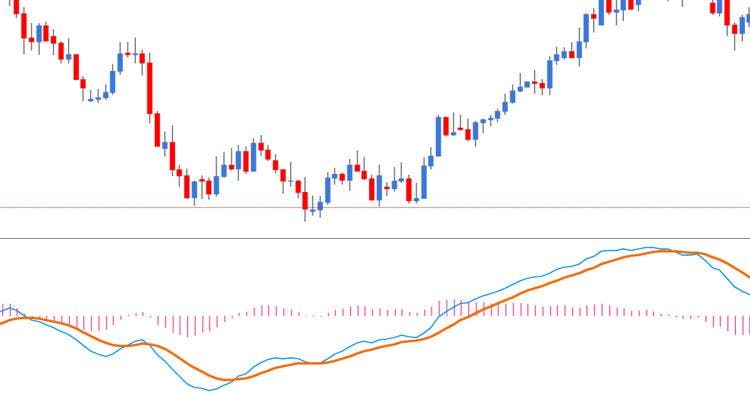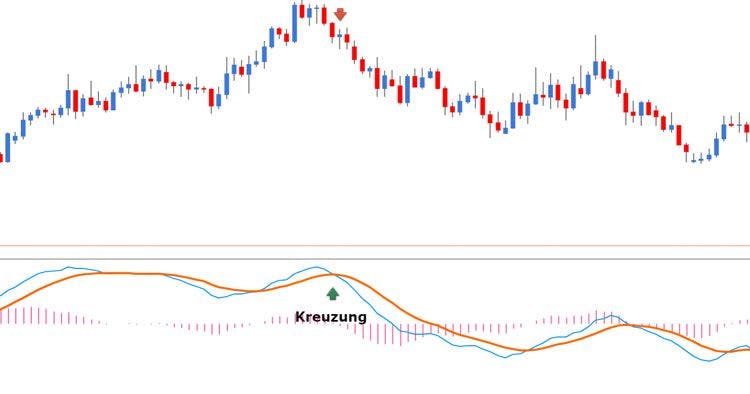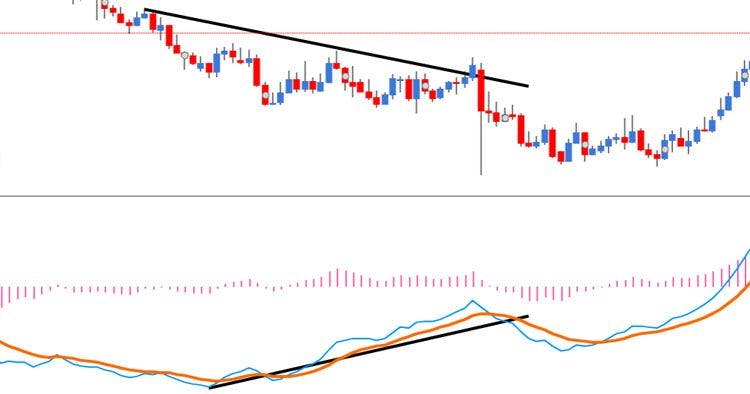What is the MACD Indicator? An Explanation
The MACD (Moving Average Convergence/Divergence) is a momentum indicator created by Gerald Appel in 1979. It calculates the difference between two exponential moving averages (EMA) and represents it in the form of a line. Usually, the MACD has an additional signal line (which acts as a trigger line). Thanks to the MACD indicator, trend direction, strength, as well as various buy and sell signals can be defined.
Construction of the MACD Indicator
The MACD indicator consists of two lines that are calculated independently of each other. The first line (blue line) subtracts the two exponential moving averages from each other. By default, the 26-period average is subtracted from the 12-period average. The numbers represent the period length. This means that the 26-period average consists of the last 26 time units. However, with the exponential average, the most recent time units are weighted more heavily.
The so-called signal line or trigger (orange line) is an additional moving average that is not included in the calculation. The signal line consists of a moving average, which is calculated from the last nine time units (9 EMA) by default.

Example of the MACD indicator in a chart
The sum of the two lines plus the scale results in the MACD indicator. On many charting platforms, the MACD indicator is displayed with candles in the background by default. These candles show the difference between the two moving averages at a glance. The settings presented here for the components of the MACD can, of course, be individually adjusted. However, we do not recommend doing this unless you have tested your individual values against past values.
Application in Trading
The easiest way to interpret the MACD is to look at the trend direction. If the MACD lines are rising, this signals an uptrend. If the lines are falling, this is a signal for a downtrend.
You might think that for this information, you could just use a simple moving average instead of the MACD indicator.
In that case, you would be completely right. The true strength of the indicator only becomes apparent when we want to identify buy and sell signals with it. When the MACD line crosses the signal line from bottom to top, this can be interpreted as a buy signal. If, on the other hand, the MACD line crosses the signal line from top to bottom, this indicates a sell signal. However, as with all other indicators, you should not blindly trust this.

A crossover of the two lines indicates a trading signal
We can also look at the strength of the trend. The further apart the two lines (MACD line and signal line) are, the stronger the prevailing trend. If the lines are close together, the trend is not strong.
We can also apply the so-called divergences. If the MACD indicates something different from the chart, something is wrong. This may be an initial sign of a trend reversal. It often helps to work with trend lines here. So, we can set a trend line in the chart and then in the MACD. If the two trend lines point in different directions, there is a divergence.

Divergences in the chart. If the indicator shows a different image than the chart, this is a sign of trend reversals
The opposite happens when there is a convergence. Here, the MACD and chart point in the same direction. In this case, the MACD indicator supports the chart's image.